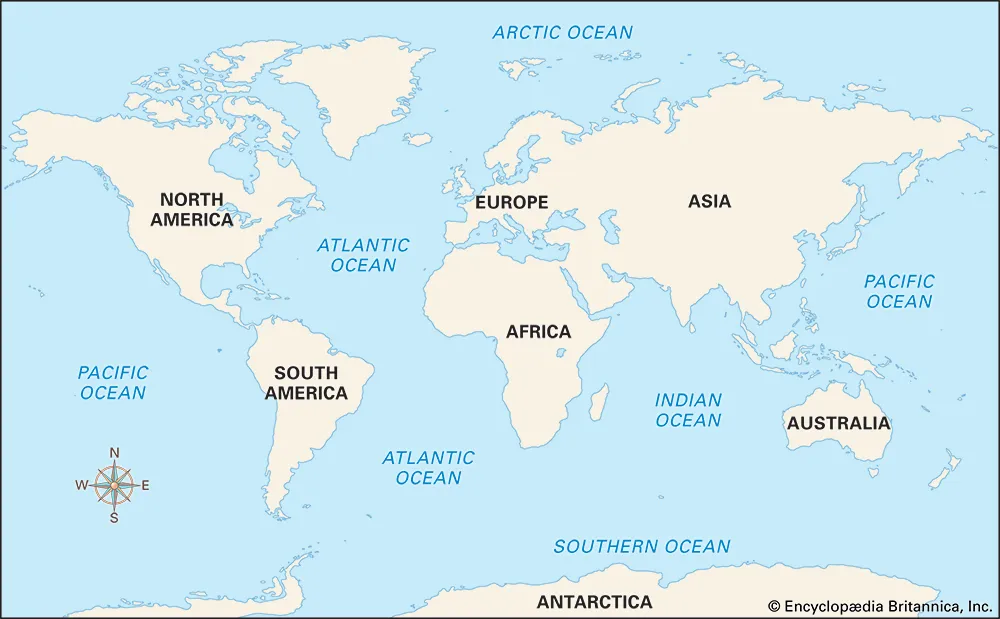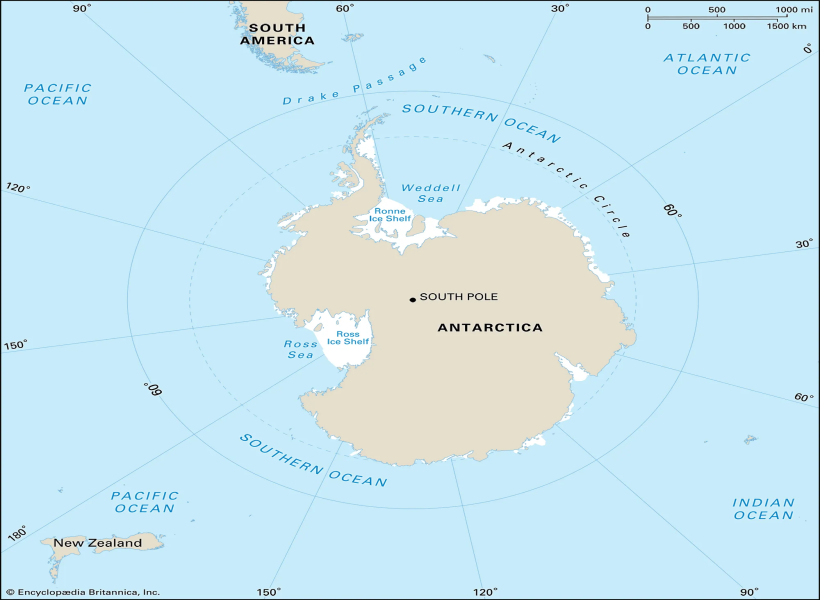Description

Copyright infringement not intended
Picture Courtesy: https://kids.britannica.com/students/article/Southern-Ocean/316380
Context: Scientists found that the Southern Ocean's clean air results from reduced winter sulphate production, along with the cleansing effect of clouds and rain, particularly from open honeycomb clouds, enhancing climate modelling and improving air quality.
Details
- The Southern Ocean, a vast and remote stretch of water encircling Antarctica, has long been recognized for having the cleanest air on Earth. However, the specific reasons behind this remarkable phenomenon remained secret. Recent scientific advancements have finally unlocked this mystery, revealing an interplay between clouds, rain, and a unique cloud formation – the honeycomb cloud.
Beyond the Absence of Human Activity
- While the limited human presence in this region naturally translates to less industrial pollution from burning fossil fuels or using chemicals, it's not the sole contributor.
- Natural sources like sea spray, tiny airborne droplets produced by crashing waves, and wind-whipped dust particles add their own share of fine particles, known as aerosols, to the atmosphere. Regardless of their origin, these aerosols are detrimental to air quality. The goal is to minimise their presence for truly clean air.

Rainfall's Role in Purification
- Research has brought to light the crucial role clouds and rain play in purifying the Southern Ocean's atmosphere.
- Unlike other parts of the world, the Southern Ocean experiences occasional, short-lived rain showers with exceptional intensity.
Honeycomb Clouds
- With the new generation of satellites offering high-resolution images, researchers were able to identify distinct honeycomb patterns within the cloud formations across the vast expanse of the Southern Ocean. These honeycomb clouds hold immense significance for regulating Earth's climate.
- When a honeycomb cell is filled with clouds, creating a "closed" state, it appears whiter and brighter. This characteristic allows it to reflect more sunlight back into space, contributing to a cooler Earth.
- Empty, or "open," honeycomb cells might seem less cloudy in satellite imagery, but here's the surprising twist: they are linked to cleaner air. These open cells are packed with more moisture, leading to significantly heavier rain showers compared to their closed counterparts. These intense downpours effectively "wash out" the aerosol particles from the air, acting as a natural air scrubber.
- Another interesting observation is that open honeycomb clouds are more prevalent during winter months. This neatly coincides with the period when the Southern Ocean boasts its cleanest air. Scientists believe large-scale weather systems influence the formation of these open and closed honeycomb patterns.
|
The presence of honeycomb cloud patterns has been observed in other regions like the North Atlantic and North Pacific during winter. This suggests a similar air-cleaning mechanism might be at play in those areas as well.
|

Southern Ocean
- The Southern Ocean, also known as the Antarctic Ocean, is a vast body of water encircling Antarctica. It holds the distinction of being the world's second-smallest ocean.
- It was formed around 34 million years ago when Antarctica and South America drifted apart, creating the Drake Passage.
- Occupying the southernmost waters of the Earth, the Southern Ocean generally stretches south of 60 degrees latitude.
- This ocean plays a vital role in regulating Earth's climate through a process called overturning circulation. Similar to the Atlantic Meridional Overturning Circulation (AMOC), this circulation helps move heat around the globe.

Source:
WIKIPEDIA
|
PRACTICE QUESTION
Q. The Drake Passage is a body of water located between:
A) South America and Antarctica
B) Africa and Australia
C) North America and Asia
D) Europe and Greenland
Answer: A
|


















